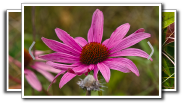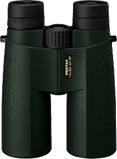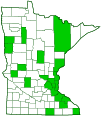Tachinid flies
(Winthemia spp.)
Overview • Description • Distribution • Taxonomy

Overview
Winthemia is a large genus of parasitic flies. It has been recorded in all six zoogeographical regions of the world. It occurs throughout the United States and southern Canada
There are 152 currently recognized Winthemia species worldwide, 28 species in North America north of Mexico, and at least 5 species in Minnesota.
Winthemia larva are parasites on Lepidoptera larvae, mostly on those in the family Noctuidae, especially armyworm moths (Spodoptera spp.), but also on some in the families Sphingdae and Geometridae.
Due to their short proboscis, Winthemia adults feed on aphid honeydew and at the nectaries of plants, not at blossoms.
Description
Identification of Winthemia species is challenging, as adult specimens share numerous deceptively similar features and display high internal structural variability. Superficial examination is therefore insufficient for reliably distinguishing between species, especially in the females. The most widely known and studied species, the so called “red-tailed tachina fly”, a parasite of armyworms, was long thought to be W. quadripustulata. An important revision of the genus (Reinhard, H. J., 1931) showed that it was actually W. rufopicta. This identification difficulty persists, meaning species-level verification requires specialized expertise and examination of the male genitalia or other minute morphological characters. For this reason, observations on citizen science sites (e.g., iNaturalist.org), and on sites curated by experts (e.g., BugGuide.net), are typically maintained at the genus level unless formally verified.
The head is wider than high and wider than the thorax. The eyes are densely hairy. The plate on the face above the upper lip (clypeus) is almost flat, not protruding, and there is no facial ridge. The tube-like mouthpart (proboscis) is stout and short, no longer than the head is high. The antennae are inserted high on the face, above the middle of the eyes. There is a large bristle (arista) on the upper side of the third antennal segment. The arista is usually thin. The females have two orbital bristles. The males have none.
The legs are slender. The fourth leg segment (tibia) on the middle legs has a thick, strong bristle on the upper surface near the middle. The tibia on the rear legs has a row of bristles, with one long one in the middle.
The wings are clear. The last section of the fourth vein is curved inward, and it does not have a stump at the bend.
The abdomen is short and oval.
Distribution |
||
|
Sources A revision of the genus Winthemia Robineau-Desvoidy in America North of Mexico (Diptera, Tachinidae) Guimarães J.H. 1972. Arq. Zool. 22: 27-112. |
|
| 11/26/2025 | ||
Taxonomy
Order
Suborder
Brachycera
Infraorder
Cyclorrhapha
Zoosection
Schizophora
Zoosubsection
Calyptratae (Calyptrate Flies)
Superfamily
Oestroidea (Bot Flies, Blow Flies, and Allies)
Family
Subfamily
Exoristinae
Tribe Winthemiini
Subordinate Taxa
Winthemia abdominalis ![]()
Winthemia alabamae
Winthemia amplipilosa
Winthemia analis
Winthemia analiselia
Winthemia andersoni ![]()
Winthemia angusta
Winthemia aquilonalis
Winthemia aurea
Winthemia aureonigra
Winthemia aurifrons ![]()
Winthemia australis
Winthemia authentica
Winthemia beijingensis
Winthemia bicrucis
Winthemia bohemani
Winthemia borealis ![]()
Winthemia brasiliensis
Winthemia brevicornis
Winthemia brevipennis
Winthemia caledoniae
Winthemia candida
Winthemia cecropia ![]()
Winthemia ciligera
Winthemia citheroniae ![]()
Winthemia claripilosa
Winthemia communis
Winthemia conformis
Winthemia consobrina
Winthemia cruentata
Winthemia cuyana
Winthemia cylindrica
Winthemia dasyops
Winthemia datanae ![]()
![]()
Winthemia deilephilae ![]()
Winthemia diversitica
Winthemia diversoides
Winthemia dubiosa
Winthemia duplicata ![]()
Winthemia elegans
Winthemia emeiensis
Winthemia erythropyga
Winthemia erythrura
Winthemia fasciculata
Winthemia floridensis ![]()
Winthemia fumiferanae ![]()
Winthemia geminata
Winthemia grioti
Winthemia hokkaidensis
Winthemia ignicornis
Winthemia ikezakii
Winthemia imitator ![]()
Winthemia infesta
Winthemia intermedia ![]()
Winthemia intonsa ![]()
Winthemia jacentkovskyi
Winthemia javana
Winthemia lateralis
Winthemia latimanus
Winthemia leucanae
Winthemia madecassa
Winthemia mallochi
Winthemia manducae ![]()
Winthemia marginalis
Winthemia masicerana
Winthemia mediocris
Winthemia militaris
Winthemia mima
Winthemia miyatakei
Winthemia montana ![]()
Winthemia neowinthemioides
Winthemia novaguinea
Winthemia obscurella
Winthemia occidentis ![]()
![]()
Winthemia okefenokeensis ![]()
Winthemia ostensackenii
Winthemia pacifica
Winthemia palpalis
Winthemia pandurata
Winthemia papuana
Winthemia parafacialis
Winthemia paraguayensis
Winthemia parallela
Winthemia patagonica
Winthemia peruviana
Winthemia pilosa
Winthemia pinguioides
Winthemia pinguis
Winthemia polita ![]()
Winthemia pollinosa
Winthemia proclinata
Winthemia pyrrhopyga
Winthemia quadrata
Winthemia quadripustulata (red-tailed tachina) ![]()
![]()
Winthemia queenslandica
Winthemia reinhardi ![]()
Winthemia reliqua
Winthemia remittens
Winthemia rifiventris
Winthemia roblesi
Winthemia rubra
Winthemia rubricornis
Winthemia ruficornis
Winthemia ruficrura
Winthemia rufilatera
Winthemia rufonotata ![]()
Winthemia rufopicta ![]()
![]()
Winthemia sexualis
Winthemia shimai
Winthemia singularis
Winthemia sinuata ![]()
![]()
Winthemia solomonica
Winthemia sororcula
Winthemia speciosa
Winthemia subpicea
Winthemia sumatrana
Winthemia terrosa
Winthemia tessellata
Winthemia texana ![]()
Winthemia trichopareia
Winthemia tricolor
Winthemia trinitatis
Winthemia venusta
Winthemia venustoides
Winthemia verticillata
Winthemia vesiculata ![]()
Winthemia xanthocera
Winthemia zhoui
Synonyms
Arge
Chatolyga
Chetoliga
Chetoljga
Crossotocnema
Dorbinia
Eversmania
Eversmannia
Neowinthemia
Okea
Trisisyropa
Winthemya
Winthemyia
Common Names
This genus has no common name. The common name for the family Tachinidae is tachinid flies, and it is applied here for convenience.
Glossary
Arista
A large bristle on the upper side of the third segment of the antenna of a fly. Plural: aristae.
Clypeus
On insects, a hardened plate on the face above the upper lip (labrum).
Proboscis
The tube-like protruding mouthpart(s) of a sucking insect.
Tibia
The fourth segment of an insect leg, after the femur and before the tarsus (foot). The fifth segment of a spider leg or palp. Plural: tibiae.
Visitor Photos
Share your photo of this insect.
This button not working for you?
Simply email us at info@MinnesotaSeasons.com.
Attach one or more photos and, if you like, a caption.
|
||
MinnesotaSeasons.com Photos
 |

Slideshows

Visitor Videos
Share your video of this insect.
This button not working for you?
Simply email us at info@MinnesotaSeasons.com.
Attach a video, a YouTube link, or a cloud storage link.
Other Videos
Tachinid Fly (Tachinidae: Winthemia) Oblique Close-up
Carl Barrentine
Resumen Winthemia reliqua
energiasunidas

Visitor Sightings
Report a sighting of this insect.
This button not working for you?
Simply email us at info@MinnesotaSeasons.com.
Be sure to include a location.
MinnesotaSeasons.com Sightings

